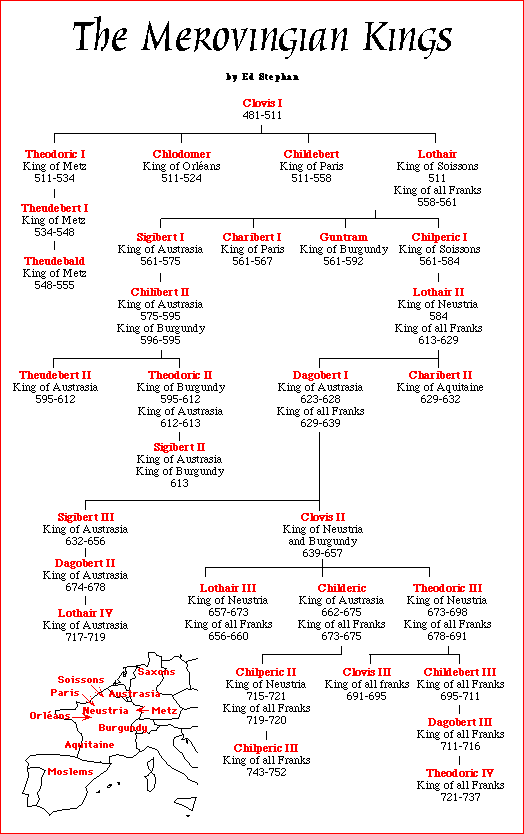notmartha wrote: ↑Fri Apr 13, 2018 1:00 pmOne thing I learned in my genealogical studies is that royalty keep impeccable lineage records. This is especially so with British royalty who believe themselves (I can't confirm nor deny) to be carrying the Scepter of David.
I’m curious what you found out on the origins of the Carolingian bloodline.
What I found is that their origins could be (one or all of the following):
Egyptian Pharaohs;
Persia (Iran);
Kurdistan (part of Iran, Iraq and Turkey);
Turkey.
There are also rumours that one of the ancestors in the British Royal family was an illegitimate child (just like the Dutch bastard Royal family)...
I disagree with David Livingstone on his believe that Ashkenazi “Jews” originate from Israel, while I think they come from Turkey (or maybe Iran).
In 2012, Israeli researcher Eran Elhaik published a DNA study that proves that Khazar ancestry is the largest element in the Ashkenazi gene pool. Bizarrely he analysed the same material used by some Ashkenazi history falsifiers, who claim that Ashkenazis descend from Israel.
Elhaik says he has proved that Ashkenazi “Jews’” roots lie in the Caucasus. They are descendants of the Khazars, a Turkic tribe, who migrated (from Khazaria) to Eastern Europe in the 12th and 13th centuries.
Elhaik compared “genetic signatures” found in Jewish populations with those of modern-day Armenians and Georgians, which he used as a substitute for the “extinct” Khazars.
In 2010, Behar’s and Harry Oster’s team had published a paper based on the same data to conclude that most contemporary Jews (including Ashkenazis) are closely related. Elhaik wrote to Ostrer asking “
to see the data used for the study”.
Ostrer replied that the data are not publicly available, and
Criteria for reviewing include novelty and strength of the proposal, non-overlap with current or planned activities, and non-defamatory nature toward the Jewish people.
That last requirement shows that Ostrer and his collaborators are biased.
Both “scientific” teams have accused each other of being liars.
Michael Hammer from Arizona that was one of Behar’s co-authors said that Elhaik used a “circular argument” to discredit the “Rhineland hypothesis”.
Marcus Feldman used the following “argument” to debunk Elhaik’s conclusions: “
He’s just wrong”.
According to Ostrer and other “scientists”, Jews (including Ashkenazis) are genetically more homogeneous than their non-Jewish neighbours. Ostrer points out that reports like that of Elhaik are “dangerous”, as they could expose that (real) Jewish genetic markers are more common among Palestinians, than among Ashkenazis.
Graur defended Elhaik’s and calls his conclusion that Ashkenazi “Jews” originate from Turkey “
a very honest estimate”:
https://forward.com/news/israel/175912/ ... erce-atta/
(archived here:
http://archive.is/uUOE5)
Here’s the controversial paper; Eran Elhaik –
The Missing Link of Jewish European Ancestry: Contrasting the Rhineland and the Khazarian Hypotheses (2012):
http://gbe.oxfordjournals.org/content/e ... 9.full.pdf
Results
To confirm that the Rhineland and Khazarian hypotheses indeed portray distinct ancestries, we assessed the degree of background admixture between Caucasus and Semitic populations.
We calculated the f3 statistics between Palestinians and six Caucasus and Eurasian populations using African San as an outgroup, for example, f3 (Palestinians, San, Armenians).
The f3 results for Turks (–0.0013), Armenians and Georgians (–0.0019), Lezgins and Adygei (–0.0015), and Russians (–0.0011) indicated a minor but significant admixture (–26<Z-score<–13) between Palestinians and the populations tested.
Because Armenians and Georgians diverged from Turks 600 generations ago (Schonberg et al. 2011), we can assume that the lion’s share of their admixture derived from that ancestry and within the expected levels of background admixture typical to the region rather than recent admixture with Semitic populations. Therefore, similarities between European Jews and Caucasus populations will unlikely be due to a shared Semitic ancestry.
(…)
Our results reveal geographically refined groupings, such as the nearly symmetrical continuous European rim extending from Western to Eastern Europeans, the parallel Caucasus rim, and the Near Eastern populations (supplementary fig. S1, Supplementary Material online) organized in Turk–Iranian and Druze clusters (fig. 3). Middle Eastern populations form a gradient along the diagonal line between Bedouins and Near Eastern populations that resembles their geographical distribution. The remaining Egyptians and the bulk of Saudis distribute separately from Middle Eastern populations.
(...)
Although they cluster with Caucasus populations (fig. 5), Eastern and Central European Jews share a large fraction of Western European and Middle Eastern ancestries, both absent in Caucasus populations. According to the Khazarian hypothesis, the Western European ancestry was imported to Khazaria by Greco–Roman Jews, whereas the Middle Eastern ancestry alludes to the contribution of both early Israelite Proto-Judeans as well as Mesopotamian Jews (Polak 1951; Koestler 1976; Sand 2009). Central and Eastern European Jews differ mostly in their Middle Eastern (30% and 25%, respectively) and Eastern European ancestries (3% and 12%, respectively), probably due to late admixture.
Druze exhibits a large Turk–Iranian ancestry (83%) in accordance with their Near Eastern origin (supplementary fig. S4 Supplementary Material online). Druze and Cypriot appear similar to European Jews in their Middle Eastern and Western European ancestries, though they differ largely in the proportion of Caucasus ancestry. These results can explain the genetic similarity between European Jews, Southern Europeans, and Druze reported in studies that excluded Caucasus populations (Price et al. 2008; Atzmon et al. 2010; Zoossmann-Diskin 2010). Overall, our results portray the European Jewish genome as a mosaic of Near Eastern-Caucasus, Western European, Middle Eastern, and Eastern European ancestries in decreasing proportions.
(...)
When compared with non-Jewish populations, all Jewish communities were significantly (P<0.01, bootstrap t test) distant from Middle Eastern populations and, with the exception of Central European Jews, significantly closer to Caucasus populations (table 1, right panel).
Similar findings were reported by Behar et al. (2010) although they were dismissed as “a bias inherent in our calculations.” However, we found no such bias. The close genetic distance between Central European Jews and Southern European populations can be attributed to a late admixture. The results are consistent with our previous findings in support of the Khazarian hypothesis.
As the only commonality among all Jewish communities is their dissimilarity from Middle Eastern populations (table 1, right panel), grouping different Jewish communities without correcting for their country of origin, as is commonly done, would increase their genetic heterogeneity.
(...)
Discussion
We show that the Khazarian hypothesis offers a comprehensive explanation for the results, including the reported Southern European (Atzmon et al. 2010; Zoossmann-Diskin 2010) and Middle Eastern ancestries (Nebel et al. 2000; Behar et al. 2010). By contrast, the Rhineland hypothesis could not explain the large Caucasus component in European Jews, which is rare in non-Caucasus populations (fig. 5), and the large IBD regions shared between European Jews and Caucasus populations attesting to their common and recent origins.
Our findings thus reject the Rhineland hypothesis and uphold the thesis that Eastern European Jews are Judeo–Khazars in origin. Consequently, we can conclude that the conceptualization of European Jews as a “population isolate,” which is derived from the Rhineland hypothesis, is incorrect and most likely reflects sampling bias in the lack of Caucasus non-Jewish populations in comparative analyses.
(...)
After the decline of their empire, the Judeo–Khazars refugees sought shelter in the emerging Polish kingdom and other Eastern European communities where their expertise in economics, finances, and politics was valued. Prior to their exodus, the Judeo–Khazar population was estimated to be half a million in size, the same as the number of Jews in the Polish–Lithuanian kingdom four centuries later (Polak 1951; Koestler 1976).
Some Judeo–Khazars were left behind, mainly in the Crimea and the Caucasus, where they formed Jewish enclaves surviving into modern times. One of the dynasties of Jewish princes ruled in the 15th century under the tutelage of the Genovese Republic and later of the Crimean Tartars.
Another vestige of the Khazar nation is the “Mountain Jews” in the North Eastern Caucasus (Koestler 1976).
The remarkable close proximity of European Jews and populations residing on the opposite ends of ancient Khazaria, such as Armenians, Georgians, Azerbaijani Jews, and Druze (fig. 3 and supplementary figs. S2, S3, and S5, Supplementary Material online), supports a common Near Eastern–Caucasus ancestry. These findings are not explained by the Rhineland hypothesis and are staggering due to the uneven demographic processes these populations have experienced in the past eight centuries.
(…)
The relatedness between European Jews and Druze reported here and in the literature (Behar et al. 2010) is explained by Druze Turkish–Southern Caucasus origins. Druze migrated to Syria, Lebanon, and eventually to Palestine between the 11th and 13th centuries during the Crusades, a time when the Jewish population in Palestine was at a minimum. The genetic similarity between European Jews and Druze therefore supports the Khazarian hypothesis and should not be confused with a Semitic origin, which can be easily distinguished from the non-Semitic origin (fig. 5).
We emphasize that testing the Middle Eastern origin of European Jews can only be done with indigenous Middle Eastern groups. Overall, the similarity between European Jews and Caucasus populations underscores the genetic continuity that exists among Eurasian Jewish and non-Jewish Caucasus populations.
(...)
Although medical studies were not conducted using Caucasus and Near Eastern populations to the same extent as with European Jews, many diseases found in European Jews are also found in their ancestral groups in the Caucasus (e.g., cystic fibrosis and a-thalassemia), the Near East (e.g., factor XI deficiency, type II), and Southern Europe (e.g., nonsyndromic recessive deafness) (Ostrer 2001), attesting to their complex multiorigins.
I thought that the lion in all these coat of arms of the aristocratic families is the Lion of Judah, but it looks like I was fooled again.
See the winged lion of Mithras; also note the serpents, dragons.

Archaeology has revealed that a lion with eagle's wings was a common symbol in Babylonia. The eagle often symbolises the sun god, so a winged lion symbolises that the sun powers the lion.
The symbol of St. Mark is really the Babylonian winged lion facing the symbol of the sun god. The lion of Daniel 7 has eagle's wings, a reference to Babylon:
http://www.whale.to/c/winged_lion.html
On 9 or 10 April 2018, Postimage.org changed the URLs of “my” images. For the last days I’ve spent a lot of time putting them back…














